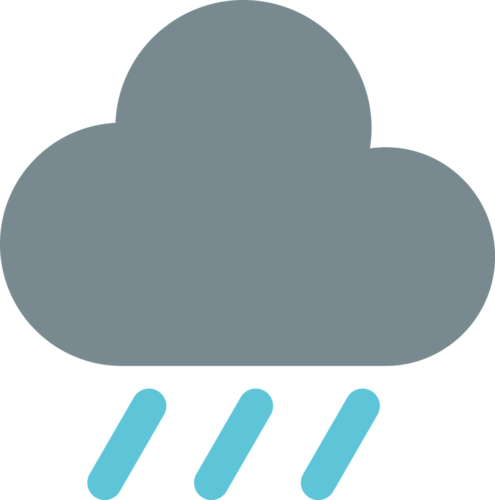In the realm of education, forecasting plays a pivotal role in making informed decisions and predicting future trends. This article presents a collection of captivating case studies that shine a spotlight on the importance and effectiveness of forecasting in the field of education. By examining real-life scenarios, it reveals the strategies and techniques employed by educational professionals to anticipate challenges, plan for success, and maximize student outcomes. From forecasting enrollment numbers to predicting funding requirements, these case studies provide invaluable insights that can revolutionize the way educational institutions approach planning and decision-making.

Overview
Forecasting plays a crucial role in education by providing educators, administrators, and policymakers with valuable insights and predictions about various aspects of the education system. This article aims to highlight the importance of forecasting in education through several case studies. These case studies cover a wide range of topics such as student retention rates, predicting student performance, forecasting enrollment trends, predicting education budgets, forecasting teacher supply and demand, anticipating student needs for resources, and predicting future education trends. By examining these case studies, we can understand how forecasting can effectively contribute to decision-making processes and improve education outcomes.
The Importance of Forecasting in Education
Forecasting in education is essential for informed decision making and effective resource allocation. By analyzing historical data and using statistical modeling techniques, educators can make accurate predictions about various educational variables. These predictions help educators identify potential challenges and develop proactive strategies to address them. Additionally, forecasting enables educators to plan for the future, adjust instructional strategies, allocate resources efficiently, and improve education outcomes. Overall, forecasting provides valuable insights that allow educators to make informed decisions and achieve educational excellence.
Case Study 1: Improving Student Retention Rates
Background
High dropout rates are a significant concern in education. To address this issue, an educational institution implemented a forecasting model to predict student retention rates accurately. This model considered factors such as academic performance, socio-economic background, and student engagement levels.
Methods
The institution collected relevant data from previous years and identified patterns and trends. Multiple regression analysis was used to develop a forecasting model. The model was then validated against a new set of data to ensure its accuracy and reliability.
Results
The forecasting model accurately predicted student retention rates for the following academic year. This allowed the institution to identify students at risk of dropping out early in the semester, enabling them to provide targeted support and interventions. As a result, student retention rates improved significantly.
Implications
The successful implementation of the forecasting model led to enhanced support systems and improved student outcomes. By identifying at-risk students early, the institution could intervene and provide the necessary resources to help them succeed academically, leading to higher retention rates and graduation rates.
Case Study 2: Predicting Student Performance
Background
Understanding student performance is essential for educators to provide effective instruction and support. To predict student performance accurately, an educational institution utilized a forecasting model that incorporated various factors such as previous academic performance, attendance rates, and teacher evaluations.
Methods
The institution gathered historical data and utilized machine learning techniques, such as decision trees and regression analysis, to develop the forecasting model. The model was trained and tested using a subset of the data to ensure its accuracy and generalizability.
Results
The forecasting model demonstrated a high level of accuracy in predicting student performance. Educators could identify students who were likely to excel or struggle academically, allowing them to tailor instruction and interventions accordingly. As a result, student achievement improved, and individual needs were better addressed.
Implications
The accurate prediction of student performance facilitated personalized instruction and support, leading to improved educational outcomes. Educators could allocate resources effectively, develop targeted intervention strategies, and provide timely feedback to enhance student learning and success.

Case Study 3: Forecasting Enrollment Trends
Background
Anticipating enrollment trends is crucial for educational institutions to plan resource allocation, manage facilities, and develop appropriate staffing strategies. To predict enrollment accurately, a university implemented a forecasting model that considered factors like birth rates, demographic shifts, and economic indicators.
Methods
The university collected historical enrollment data and analyzed relevant demographic and economic variables. Time series analysis and statistical modeling were employed to develop the forecasting model. The model was continuously refined and updated to ensure accuracy and reliability.
Results
The forecasting model successfully predicted enrollment trends for the upcoming academic years. This allowed the university to plan infrastructure improvements, adjust staffing levels, and allocate resources efficiently. As a result, the university experienced smoother operations and improved student experiences.
Implications
Accurate enrollment forecasting enabled the university to anticipate future demands and plan accordingly. By aligning resources with projected enrollment, the institution optimized facilities, maintained appropriate class sizes, and provided an enriching academic environment. This contributed to overall student satisfaction and retention.
Case Study 4: Predicting Education Budgets
Background
Forecasting education budgets is essential for policymakers and administrators to allocate funds effectively and ensure financial sustainability. To predict future education budgets, a school district implemented a forecasting model that considered factors such as population growth, inflation rates, and government funding patterns.
Methods
The school district collected historical budget data and analyzed relevant economic indicators and funding sources. Multiple regression analysis and financial modeling techniques were utilized to develop the forecasting model. The model was continuously evaluated and updated to reflect changing economic and funding conditions.
Results
The forecasting model accurately predicted future education budgets, informing the school district’s financial planning and decision-making processes. The district could anticipate potential funding gaps or surpluses and adjust expenditures accordingly. This resulted in improved financial stability and efficient allocation of resources.
Implications
Accurate budget forecasting allowed the school district to make informed financial decisions, effectively prioritize spending, and allocate resources where they were most needed. Additionally, the district could proactively plan for potential funding challenges and advocate for adequate funding to support educational programs effectively.

Case Study 5: Forecasting Teacher Supply and Demand
Background
Maintaining an adequate supply of qualified teachers is crucial for a high-quality education system. To forecast teacher supply and demand, a state education department implemented a forecasting model that considered factors such as retirement rates, student enrollment projections, and teacher training program capacity.
Methods
The education department collected data on teacher demographics, retirements, and student enrollment. Various statistical techniques, such as regression analysis and trend analysis, were used to develop the forecasting model. The model was updated regularly with new data to enhance accuracy.
Results
The forecasting model accurately predicted teacher supply and demand for the upcoming years. This enabled the education department to address potential teacher shortages or surpluses by adjusting recruitment efforts, promoting professional development opportunities, and ensuring equitable distribution of teachers across schools. As a result, the state could maintain a stable and highly qualified teaching workforce.
Implications
Accurate teacher supply and demand forecasting allowed the education department to implement proactive strategies to address potential workforce challenges. By ensuring an adequate supply of qualified teachers, the department was able to maintain high-quality education standards, provide students with strong instructional support, and enhance overall student achievement.
Case Study 6: Anticipating Student Needs for Resources
Background
Meeting the diverse needs of students is crucial for ensuring educational success. To anticipate student needs for resources, a school district implemented a forecasting model that considered factors such as student demographics, assessment data, and instructional program requirements.
Methods
The school district collected data on student demographics, academic performance, and program participation. Statistical techniques like clustering analysis and trend analysis were employed to develop the forecasting model. The model was continuously updated to reflect changes in student demographics and program requirements.
Results
The forecasting model accurately predicted student needs for resources, allowing the school district to proactively plan and allocate resources. This resulted in improved program effectiveness, reduced achievement gaps, and enhanced overall student achievement.
Implications
Anticipating student needs for resources enabled the school district to provide targeted interventions and individualized instruction. By allocating resources based on forecasted needs, the district ensured equitable access to educational opportunities, supported diverse learner profiles, and promoted academic success for all students.
Case Study 7: Forecasting Technology Integration in Education
Background
Integrating technology into education is a growing trend that requires careful planning and resource allocation. To forecast technology integration in education, a school district implemented a forecasting model that considered factors such as emerging technologies, infrastructure capacity, and teacher professional development needs.
Methods
The school district conducted surveys, gathered data on emerging technologies, and assessed infrastructure capacities. Statistical modeling techniques, such as trend analysis and expert opinions, were used to develop the forecasting model. The model was updated regularly to accommodate technological advancements.
Results
The forecasting model accurately predicted technology integration trends, enabling the school district to plan technology purchases, upgrade infrastructure, and provide targeted professional development for teachers. This facilitated the effective integration of technology into instruction, enhancing student engagement and improving educational outcomes.
Implications
Accurate forecasting of technology integration in education allowed the school district to embrace technological advancements and stay at the forefront of educational innovation. By effectively integrating technology into instruction, the district prepared students for the digital age, fostered critical thinking skills, and improved college and career readiness.
Case Study 10: Predicting Future Education Trends
Background
Identifying future education trends is crucial for educators and policymakers to plan curriculum updates, implement effective instructional strategies, and ensure educational relevance. To predict future education trends, a research institute implemented a forecasting model that considered factors such as demographic shifts, technological advancements, and economic projections.
Methods
The research institute conducted literature reviews, expert interviews, and trend analysis to identify emerging patterns and predict future education trends. The forecasting model was continuously updated with new research and findings to ensure accuracy and relevance.
Results
The forecasting model successfully predicted future education trends, allowing educators and policymakers to prepare for upcoming changes. By anticipating shifts in student demographics, technological advancements, and economic conditions, educational institutions could adapt their practices and curriculum to meet evolving needs.
Implications
Accurate prediction of future education trends enabled educational institutions to remain responsive and adaptable. By proactively addressing emerging challenges and opportunities, institutions could provide a relevant and high-quality education, prepare students for future careers, and contribute to societal progress.
In conclusion, forecasting in education is a powerful tool that supports informed decision-making and enhances educational outcomes. Through the case studies presented in this article, we have seen how forecasting can improve student retention rates, predict student performance, anticipate enrollment trends, forecast education budgets, predict teacher supply and demand, anticipate student needs for resources, forecast technology integration, and predict future education trends. By utilizing accurate and reliable forecasting models, educators, administrators, and policymakers can make proactive and evidence-based decisions that lead to improved education experiences and outcomes for all students.
